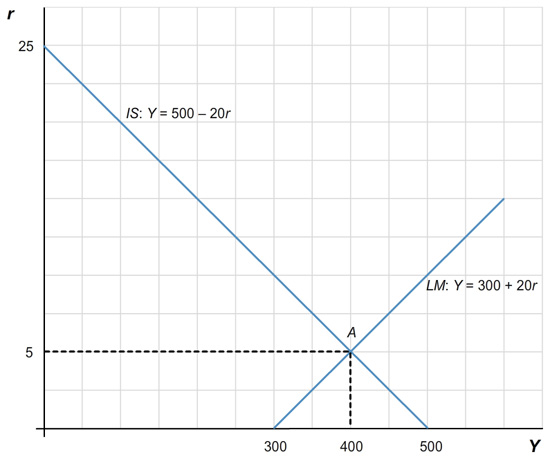Work It Out
Chapter 11 – Question 6
TABLE OF CONTENTS
Question 1 of 2
Step 1
Work It Out
true
true
You must read each slide, and complete any questions on the slide, in sequence.
The following equations describe an economy.
Y = C + I + G.
C = 120 + 0.5 (Y – T).
I = 100 – 10 r.
(M/P)d = Y – 20r.
G = 50.
T = 40.
M = 600.
P = 2.
From the above list, use the relevant set of equations to derive the IS curve.
IS: _____________
Review Chapter 11 for details on the variables used in the ISLM model. Review pages 324-325, along with Figure 11-7, for a discussion of how to derive the IS curve.


3:02
Step 2
The following equations describe an economy.
Y = C + I + G.
C = 120 + 0.5 (Y – T).
I = 100 – 10 r.
(M/P)d = Y – 20r.
G = 50.
T = 40.
M = 600.
P = 2.
From the above list, use the relevant set of equations to derive the LM curve. What are the equilibrium level of income and the equilibrium interest rate?
LM: ________
Review pages 330-332, along with Figure 11-11, for a discussion of how to derive the LM curve. Review pages 333-334, along with Figure 11-13, for a discussion of how to solve the ISLM model for the equilibrium interest rate and level of income.
The equilibrium level of income, Y, is , and the equilibrium interest rate, r, is %.
Review pages 330-332, along with Figure 11-11, for a discussion of how to derive the LM curve. Review pages 333-334, along with Figure 11-13, for a discussion of how to solve the ISLM model for the equilibrium interest rate and level of income.


1:52
